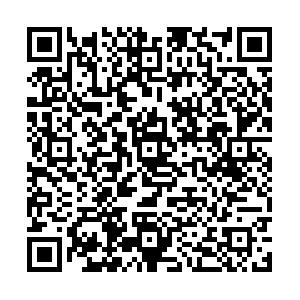A management model for tangible and intangible resources in nature reserve
-
摘要: 通过近50 a的发展,我国的自然保护事业有了长足的发展,但由于经费不足,自然保护区普遍开展了开发活动,出现了无序、违反生态规律的掠夺式开发。这直接导致了生态环境的破坏和部分自然资源的枯竭。为妥善解决自然保护区资源保护与开发的矛盾,按照自然保护区资源的特点,提出了自然保护区资源的有形资源、无形资源分类方法,并阐述了无形资源无形性、资产性、垄断性、利用的长期性、价值的不确定性和内涵的发展性等特征。以天目山国家级自然保护区为例提出了自然保护区无形资源常见类型:名称、动植物种质资源、景观视觉欣赏、自然声音和森林精气等。根据自然保护区有形资源价值无限,无形资源价值量化的思路,提出了有形资源资源性管理和无形资源资产化管理的思路。Abstract: In the past 50 years, the work in China's nature reserves has made rapid progress. However, due to a lack of funds, exploitation for pure economic benefit, which sometimes violated the principles of ecological development, emerged in most of the nature reserves resulting in destruction of the ecological environment. To enhance development and protection of resources in nature reserves, quantifying resources was put forward. First, new classifications of intangible and tangible resources were derived from concepts of resources and nature reserve resource features. Then, intangible resource factors (such as intangibility, being an asset, being a monopoly, having long-term utilization, and value uncertainty) were described in detail. In National Nature Reserve of Mount Tianmu, the study area, common types of intangible resources from nature reserves were proposed, including object name, germplasm resources, landscape view, natural sounds and forest pneuma. Assuming that a tangible resource value from a nature reserve was infinite, the value of intangible resources in these areas was quantified. This new model of resource management suggested that tangible resources should be managed directly and intangible resources indirectly. This would help realize scientific, reasonable, and sustainable development of nature reserve resources.
-
Key words:
- forest engineering /
- nature reserve /
- tangible resource /
- intangible resource /
- direct management /
- indirect management
-
[1] 冯晓东,刘欣.中国自然保护区的建设现状[J].林业资源管理,2007(1):21-24. [2] 苏扬.改善我国自然保护区管理的对策[J].科技导报,2004(9):31-34. [3] 李霞,崔彬.关于自然资源价值的思考[J].中国矿业,2006,15(8):1-3. [4] 熊聪茹,马文博.重污染企业咋进了自然保护区[J].半月谈,2006,10(19):44-45. [5] 吴新民,潘根兴.自然资源价值的形成与评价方法浅议[J].经济地理,2003,5(3):323-326. [6] 潘再东,韩美.区域相对资源承载力与可持续发展问题探讨——以济南长清区为例[J].资源开发与市场,2007,23(2):145-146 ,175. [7] 刘洋,吕一河,陈利顶,等.自然保护区生态旅游影响评价:进展与启示[J].自然资源学报,2005,20(5):771-779. [8] 王祖良.浙江天目山自然保护区生态旅游评价与管理研究[D].北京:北京林业大学,2006. [9] 封志明.资源科学导论[M].北京:科学出版社,2004. [10] 孙立,李俊清.论自然保护区无形资产的作用[J].国土资源科技管理,2005(6):82-87. [11] 于玉林.无形资产概论[M].上海:复旦大学出版社,2005. [12] 马向阳,蒋祥林,王书林.国有无形资产价值化管理研究[J].天津大学学报,2000,9(3):187-191. [13] 王子平,冯百侠,徐静珍.资源论[M].石家庄:河北科学技术出版社,2001. [14] 杨淑贞,程爱兴.天目山蝶类资源调查报告[J].浙江林学院学报,2000,17(3):253-261. [15] 楼涛,赵明水,杨淑贞,等.天目山国家级自然保护区古树名木资源[J].浙江林学院学报,2004,21(3):269-274. [16] 吴楚材,郑群明.植物精气研究[J].中国城市林业,2005,3(4):61-63. [17] 何承耕.评资产化与资源化管理[J].生态经济,2002(6):38-41. [18] 王凤春.美国联邦政府自然资源管理与市场手段的应用[J].中国人口·资源与环境,1999,4(2):95-98. [19] 谭荣,曲福田.自然资源合理利用与经济可持续发展[J].自然资源学报,2005,11(6):797-805. [20] 安晓明.关于我国经济发展中自然资源的资产化和商品化问题[J].当代经济研究,2003(8):23-26. A management model for tangible and intangible resources in nature reserve -

-
链接本文:
https://zlxb.zafu.edu.cn/article/id/09014092-b1d3-4a35-a327-5b9538a1176a
 点击查看大图
点击查看大图
计量
- 文章访问数: 869
- HTML全文浏览量: 129
- PDF下载量: 24
- 被引次数: 0






 下载:
下载:
